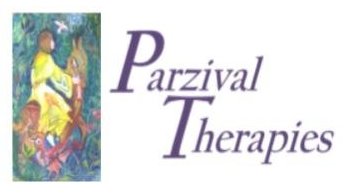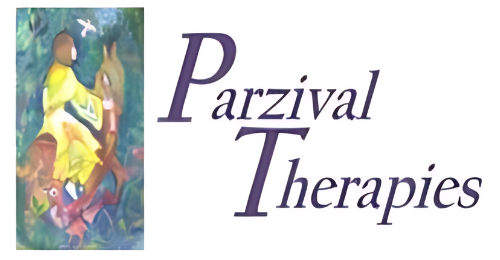Truth About Blood Sugar
It is widely held that the primary instigator of diabetes is sugar, which has led to recommendations to eat a low carbohydrate diet and avoid sugar at all costs, including fruit. Sugar and unhealthy carbohydrates from things like pastries, cakes, cookies, doughnuts, and candy are indeed bad for us and should be avoided. However, our bodies need healthy carbohydrates to function, which can be found in foods such as butternut squash, sweet potatoes, carrots, lentils, black beans, berries, apples, and other fruits.
When we eat carbohydrates (regardless of the source), our body breaks them down into glucose (blood sugar), which becomes the fuel that keeps us going—and keeps us alive. When glucose levels rise, our pancreas secretes the hormone insulin. Insulin helps usher glucose out of the bloodstream and into our cells where it can be used for energy, and keeps our blood sugar levels stable. However, this process can go awry if the pancreas fails to produce enough insulin, or if some of your cells stop responding to insulin, which is called insulin resistance. In either case, blood sugar levels remain elevated, putting you at risk for type 2 diabetes.
The Role of Fat
Contrary to popular belief, one factor that is much more likely to put you at risk for insulin resistance and diabetes than healthy carbs such as those listed above is a high-fat diet. There are several reasons for this. First, high blood fat levels put a major strain on your liver, pancreas, and adrenal glands, which work together to manage your blood sugar levels. Your liver has to shoulder the burden of processing the fat you eat, so a high-fat diet can make the liver sluggish and unable to store and release glucose as it should. Excess fat burdens your pancreas because it needs to release enzymes to aid fat digestion.
Additionally, when blood fat levels are high, the adrenals flood the body with adrenaline. While this increases digestive strength to help move fat through your system, excess adrenaline can wear away at the pancreas, reducing its ability to produce enough insulin to keep your glucose levels in check. Lastly, high blood fat levels can prevent glucose from entering cells. This is not to say that all fat, even healthy fats such as nuts, seeds, and avocados, are bad for us and need to be completely eliminated.
Regardless of your chosen diet, fat intake just needs to be moderated to avoid excessively high blood fat levels when you are dealing with prediabetes or type 2 diabetes. For instance, if you eat a vegan diet, reduce the amount of fat you take in from nuts, nut butters, seeds, oils, avocados, etc. If you are ovo-lacto vegetarian, cut back on eggs, dairy, nuts, seeds, oils, avocado, etc. If your diet includes animal protein, cut back to one serving of meat per day (even lean meats contain appreciable amounts of fat).
Scaling back on fat in this manner helps ease the burden on your pancreas, liver, and adrenal glands, which goes a long way toward preventing and/or healing from diabetes. If you opt to maintain a high-fat diet (which may normalize your A1C levels in the short-term), it becomes especially important to limit your carb intake, as a diet high in both fat and carbs will tax your bodily systems that much more. Ultimately, reducing dietary fat and including healthy carbs of the kind listed above will help give you the best shot at healing from diabetes and help keep your A1C levels in a healthy range on a more permanent basis.
The Role of Adrenaline
A precursor to type 2 diabetes is hypoglycemia (when glucose levels drop below normal), which is due to a stagnant, sluggish, overburdened, or weakened liver and dysfunctional adrenal glands. In fact, both type 2 diabetes and hypoglycemia typically begin with malfunctioning adrenals. When you experience chronic stress, for example, your adrenal glands secrete copious amounts of adrenaline, which is very damaging to the pancreas. Hypoglycemia can also occur if you don’t eat at least a light, balanced snack—e.g., a fruit (for sugar and potassium) and a vegetable (for sodium)—every two hours.
Skipping meals forces your body to use up your liver’s glucose storage, driving the body to run on adrenaline, which can damage your pancreas and lead to insulin resistance. Too little adrenaline can also impair your pancreas, as it forces it to work overtime to compensate. Adrenal fatigue, in which unstable adrenals alternate between producing too much and too little adrenaline, can also harm your pancreas as it tries to compensate for dry spells of adrenaline and then gets scorched by floods of it.
Healing Foods
In addition to scaling back fat intake, it is important to incorporate healthy carbohydrates into your diet. Healing carbohydrates such as squash, sweet potatoes, other root vegetables and fruit contain critical nutrients for optimal health, and when the natural sugars in these healthy carbs are bonded to these nutrients, it does not wreak havoc on your blood sugar levels the way processed sugar does.
Wild blueberries, papayas, blackberries, apples, and raspberries are top fruits to eat if you have type 2 diabetes or hypoglycemia. Vegetables to focus on include spinach, celery, sprouts, kale, and asparagus. These foods help detoxify the liver, strengthen glucose levels, support the pancreas, boost the adrenal glands, and stabilize insulin. To keep your blood fat in check, it is best to avoid cheese, milk, cream, butter, eggs, processed oils, and all sugars except for raw honey and fruit.
While these recommendations fly in the face of conventional strategies for preventing and managing type 2 diabetes, emphasizing nutrient-dense fruits and vegetables and reducing dietary fat eases the burden on your liver, pancreas, and adrenals, helping ensure that they can perform their duties, including keeping your blood sugar as stable as possible. Make friends with healthy carbs and fruit, curtail your fat intake, and reclaim the healthy life you are meant to live!
Listen to the radio show above to learn more about the true causes of both type 1 and type 2 diabetes. You can also learn more about how to address type 2 diabetes and hypoglycemia in Anthony William’s book Medical Medium: Secrets Behind Chronic and Mystery Illness and How to Finally Heal.
Anthony William, Inc. - Disclaimer for Medical Medium Blog
This blog, its content and any linked material are presented for informational purposes only and are not a substitute for medical advice, diagnosis, treatment, or prescribing. Nothing contained in or accessible from this blog should be considered to be medical advice, diagnosis, treatment, or prescribing, or a promise of benefits, claim of cure, legal warranty, or guarantee of results to be achieved. Never disregard medical advice or delay in seeking it because of something you have read in this blog or in any linked material. Neither Anthony William nor Anthony William, Inc. is a medical doctor or other licensed healthcare practitioner or provider. Consult with a licensed healthcare professional before altering or discontinuing any current medications, treatment or care, or starting any diet, exercise or supplementation program, or if you have or suspect you might have a health condition that requires medical attention. The United States Food and Drug Administration has not evaluated any statement, claim, or representation made in or accessible from this blog or any linked material. The content of this blog and any linked material does not necessarily reflect the opinions of Anthony William, Inc. or the principal author and is not guaranteed to be correct, complete, or up-to-date. This article may contain links to other resources on the Internet. These links are provided as citations and aids to help you identify and locate other Internet resources that may be of interest, and are not intended to state or imply that Anthony William, Inc. or the principal author recommends, endorses, supports, sponsors, or is in any way affiliated or associated with any person or entity associated with the linked material, or is legally authorized to use any trade name, registered trademark, logo, legal or official seal, or copyrighted symbol that may be reflected in the linked material. If you would like to communicate with us, please visit our website at http://www.medicalmedium.com
Copyright© 2020 Anthony William, Inc. All Rights Reserved.







